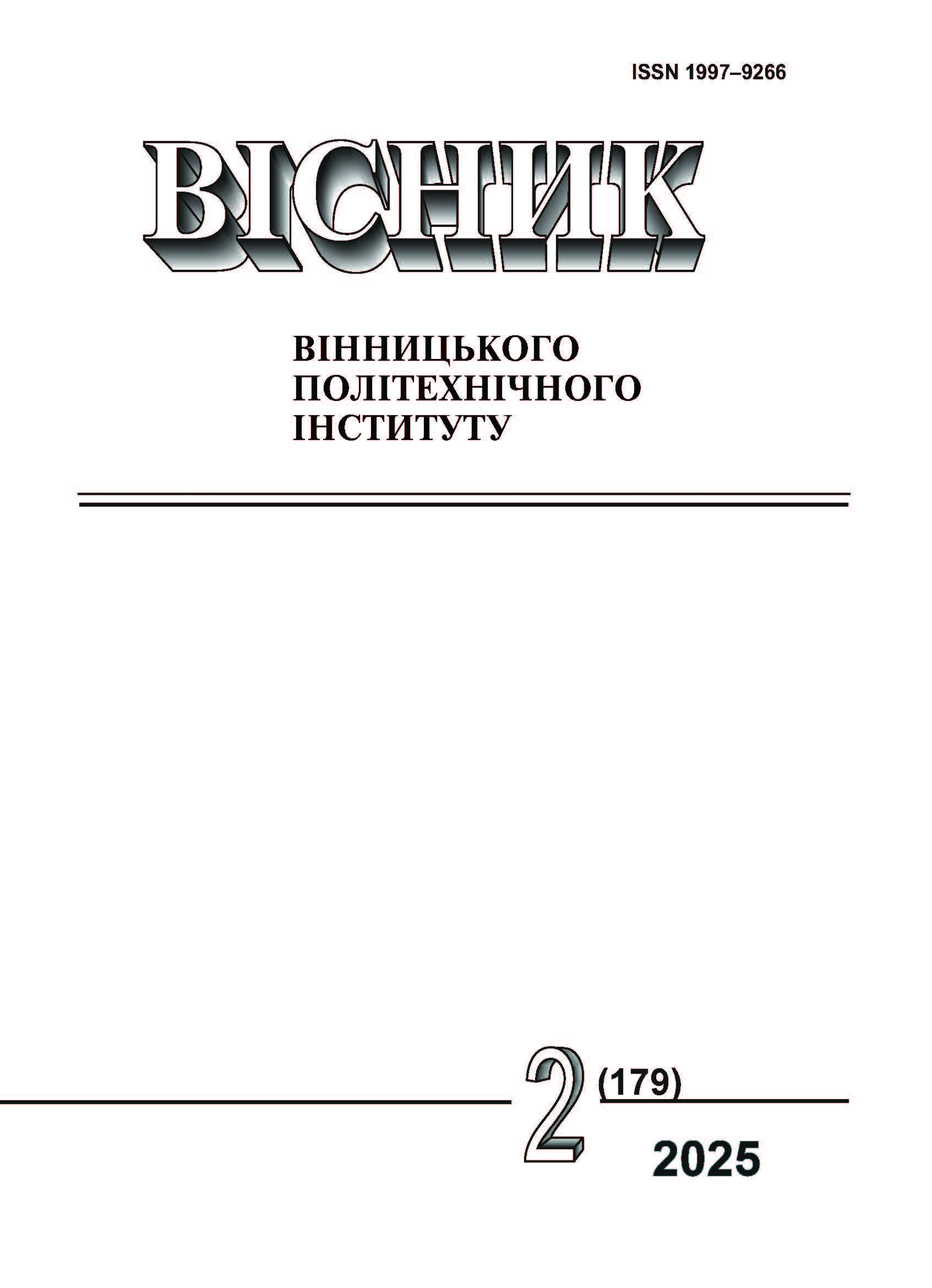Frequency Starting of the Electric Drive of the Above Resonance Vibration Machine
DOI:
https://doi.org/10.31649/1997-9266-2025-179-2-91-96Keywords:
frequency-controlled electric drive, induction motor,, frequency start, vibration machine, resonant zoneAbstract
An above resonance vibration machine with two-shaft unbalanced vibrators for compaction of rigid concrete mixtures in the form is considered. It is noted that for such vibration machines, an unregulated electric drive with an overestimated power of the drive motors is usually used. This enables to quickly overcome the resonant zone during start-up, but in steady state, the drive motors operate with significant underload, which leads to a deterioration in the energy performance of the motors. For the possible replacement of drive motors of excessive power with less powerful ones, the start-up of a resonant vibration machine using a frequency-controlled electric drive was investigated. Using mathematical modelling, a study was conducted to investigate the influence of the basic laws of frequency control on overcoming the resonant zone during start-up. The influence of the laws of frequency control was determined by comparing the maximum displacement of the working body of the vibration machine and the starting current of the motor during frequency and direct start-up. Analysis of the obtained simulation results showed that the basic laws of frequency control do not provide a reduction in the amplitude of oscillations of the working body of the vibration machine and dynamic loads when overcoming the resonant zone during the start-up process, if the frequency start-up time is greater than the direct time. Further studies were carried out with the optimal frequency sweep time for this vibration machine and replacing the drive motors with less powerful ones for the following four cases: with a linear frequency control law, with a stepwise increase in the supply voltage and a linear change in frequency, with a simultaneous stepwise increase in voltage and frequency, with a stepwise increase in frequency and a linear change in voltage. The stepwise increase in the voltage and frequency of the supply was performed at the moment when the value of the supply frequency of the induction motor was equal to the specified resonant frequency of the vibration machine. It is shown that with a linear change in the voltage and frequency of the supply, a decrease in the acceleration of the drive motors in the resonant zone is observed, and a stepwise increase in the frequency leads to "jamming" of the rotors of the drive motors of the vibration machine. It is noted that to overcome the resonant zone during the frequency start-up of induction motors of above resonant vibration machines, it is advisable to use only a step-like increase in voltage, which will allow setting the drive motors with the power required for steady-state operation.
References
О. Ланець, «Основи розрахунку та конструювання вібраційних машин,» Книга 1. Теорія та практика створення вібраційних машин з гармонійним рухом робочого органа: навч. посіб. Львів, Україна: вид-во Львівської політехніки, 2018.
I. I. Blekhman, Vibration Mechanics. Singapore: World Scientific, 2000.
В. Ю. Ноженко, Д. Й. Родькін, і О. П. Чорний, «Пускові режими асинхронного електропривода зарезонансної вібраційної машини,» Вісник Вінницького політехнічного інституту, № 4 (133), с. 58-64, 2017.
М. П. Ярошевич, і Т. С. Ярошевич, Динаміка розбігу вібраційних машин з дебалансним приводом, моногр. Луцьк, Україна: ЛНТУ, 2010.
R. Markert, and M. Seidler, “Analytically based estimation of the maximum amplitude during passage through resonance,” International Journal of Solids and Structures, no. 38, pp. 1975-1992, 2001.
C. Zhao, H. Zhu, R. Wang, et al., “Synchronization of two non-identical coupled exciters in a nonresonant vibrating system of linear motion. Part I: Theoretical analysis,” Shock and Vibration, no. 16, pp. 505-515. 2009.
Т. С. Ярошевич, А. В. Селивонюк, і М. В. Петухов, «Спосіб пуску вібраційної машини з дебалансним приводом,» Патент України B24B 31/067. № 38199, 25.12.2008.
I. I. Blekhman, V. B. Vasil’kov, and N. P. Yaroshevych, “On Some Opportunities for Improving Vibration Machines with Self-Synchronization Inert,” Vibration Exciters Journal of Machinery Manufacture and Reliability, no. 42 (3), рр. 192-195, 2013.
І. М. Голодний, Ред., Регульований електропривод. Київ, Україна: ТОВ «ЦП «Компринт», 2015.
О. І. Толочко, Моделювання електромеханічних систем. Математичне моделювання систем асинхронного електроприводу. Київ, Україна: НТУУ «КПІ», 2016.
V. Nozhenko, O. Bialobrzheskyi, D. Rodkin, V. Druzhynina, and S. Yakymets, “The System of Forming the Control Mode of the Electric Drive During the Start-Up of the Vibration Machine,” World Science, no. 7 (68), 2021. https://doi.org/10.31435/rsglobal_ws/30072021/7639 .
В. Ю. Ноженко, О. П. Чорний, Д. Й. Родькін, і В. В. Ченчевой, «Керування пуском зарезонансної вібраційної машини з дебалансними віброзбуджувачами,» Вісник Національного технічного університету «Харківський політехнічний інститут», вип. 27 (1249), с. 384-387, 2017.
М. О. Азарєнков, В. О. Гірка, В. І. Лапшин, і В. І. Муратов, Теорія коливань та хвиль. Харків, Україна, 2005.
V. Nozhenko, D. Rodkin, and K. Bohatyrov, “Control of Passing the Resosance Zone During Start-up of Above Reconance Vibration Machine,” in 2019 IEEE International conference on Modern Electrical and Energy Systems (MEES), Conference Proceedings, Kremenchuk, Ukraine, 2019, pp. 146-149. https://doi.org/10.1109/MEES.2019.8896625 .
Downloads
-
pdf (Українська)
Downloads: 26
Published
How to Cite
Issue
Section
License

This work is licensed under a Creative Commons Attribution 4.0 International License.
Authors who publish with this journal agree to the following terms:
- Authors retain copyright and grant the journal right of first publication.
- Authors are able to enter into separate, additional contractual arrangements for the non-exclusive distribution of the journal's published version of the work (e.g., post it to an institutional repository or publish it in a book), with an acknowledgment of its initial publication in this journal.
- Authors are permitted and encouraged to post their work online (e.g., in institutional repositories or on their website) prior to and during the submission process, as it can lead to productive exchanges, as well as earlier and greater citation of published work (See The Effect of Open Access).





